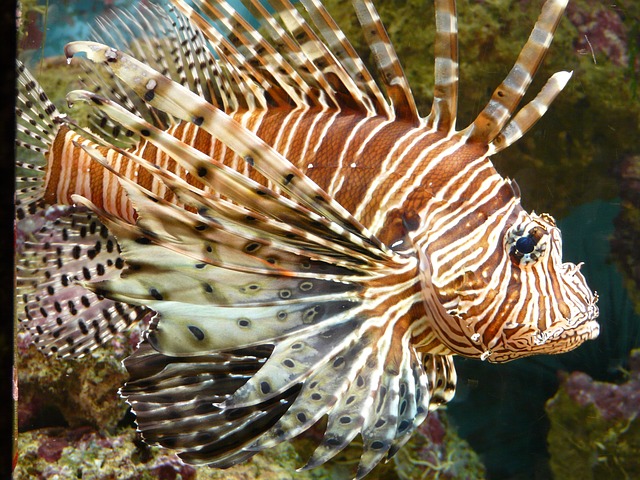An ecosystem is a complex web of interactions between different organisms and their environment. The interactions between species have often been tuned by years of co-evolution, resulting in specialized defense mechanisms and adaptations to their specific environment. When a non-native species is introduced, it has the potential to become very disruptive.
How are exotic species introduced?
The introduction of non-native species is often an unwanted result of human activity. Ever since humans started exploring and colonizing new lands, hitchhiking organisms have accompanied them. Perhaps the most famous example of this has been the spread of the common house rat Rattus rattus, native to Asia and now a worldwide pest. Alien species are still spread today through human transportation systems, like when fish and marine invertebrates are carried in the ballast water of ships.
Other times, nonnative species are deliberately introduced. For example, rabbits were released in Australia in the 1800s for sport and have since become widespread, to the detriment of Australian ecology. In other cases, animals are liberated into the wild by well-meaning pet owners who no longer wish for or are able to care for their exotic pets.
To be sure, not every alien species turns into a threat, or even manages to survive. Introduced organisms have not adapted to cope with the new site’s climate, predators and competitors. Moreover, if they were previously kept in captivity they might be ill-suited to survive on their own, and are likely to die from starvation, depredation or exposure. However, some species manage to survive and even thrive, often at the expense of native organisms. Whether an alien species becomes invasive or not depends on several factors, including lack of natural predators or diseases, flexibility to adapt to different environmental conditions, dispersion and reproduction rates, and diet diversity.
An invasive species, then, is any non-indigenous animal, plant, fungus, or bacteria, that becomes established in a new environment, and threatens or damages resident species. In fact, invasive species are considered one of the top causes for loss of biodiversity worldwide, and can lead to the extinction of native species.
Why are invasive species harmful?
Invasive species may outcompete native organisms for food or shelter. Native species often don’t have defense mechanisms against introduced species, and so can easily become prey. Invasive species can also modify the environment in a way that is detrimental for indigenous organisms. For example, the common carp, native to Eurasia but introduced in America, increases the turbidity of water and uproots vegetation due to its eating habits, affecting native fish that need clear water to survive. Other times, invasive species may harbor pathogens for which the native organisms have no adequate defenses. A concerning example of this is the case of the European salamanders, which are rapidly disappearing as a result of the fungus Batrachochytrium salamandrivorans, likely introduced through the pet trade.
Read on to learn about some of the most important invasive species affecting our ecosystems today:
1. Lionfish
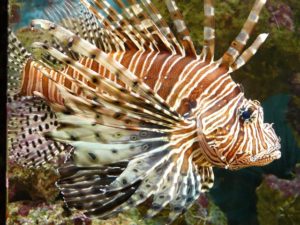
Lionfish are fish with showy fins and venomous spikes, popular among aquarists. They are native to the Indo-Pacific Ocean, but two species, Pterois volitans and Pterois miles, have become very successful invasive species in the Eastern Atlantic Ocean and the Caribbean Sea. They were first observed off the coast of Florida in the 1980s, and have since spread along the East coast of the US and throughout the Caribbean, with some specimens found as far south as Brazil. There have even been some sightings as far north as Rhode Island, although they are not suited for cold temperatures. It is generally accepted that the lionfish invasion was a result of several introductions, including specimens released by aquarists. Several lionfish were also reportedly released into the wild from a flooded aquarium after Hurricane Andrew in 1992.
There are several reasons why the lionfish invasion has been so successful. They are aggressive fish with a voracious appetite and a very diverse diet. They are also able to spread widely using ocean currents for the dispersion of their larvae. Lionfish have few natural predators thanks to the protection of their venomous spikes. As a result, they have become an important threat to the health of the native coral-reefs and fish communities. In a study on lionfish eating habits off of the Bahamas, scientists found that during the period from 2004 to 2010, lionfish numbers increased considerably, to the point of constituting 40% of predator biomass in the area. Meanwhile the biomass of the 42 species of fish identified as prey for the lionfish decreased by 65%. Current control efforts include spearfishing, and promoting lionfish meat as a delicacy.
2. Cane Toad
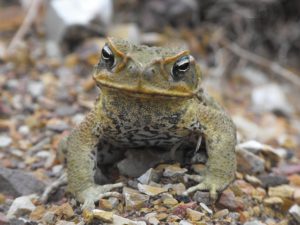
The cane toad, Rhinella marina, is a species of toad native to Central and South America. It is a large toad with a blotched, warty skin that produces a toxic secretion. In the early 20th century, cane toads were introduced in Australia and several islands of the Caribbean and Oceania as biological control for pests plaguing sugarcane plantations. However, the toads soon became pests themselves.
Cane toads breed prolifically and have a long lifespan, living up to 15 years in the wild. They have a voracious appetite and a broad diet, which includes rodents, reptiles and other amphibians, birds, invertebrates, plants, dog food, and even hosehold waste. In addition, they have a powerful protection against predators. Adult toads have glands that release potent toxins, and tadpoles are toxic if ingested. The toads are detrimental to many native species of reptiles, with which they compete for food, as well as for frog-eating predators, which can become intoxicated.
3. American Mink
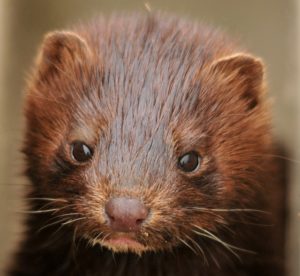
American mink, Neovison vison, were brought into Scotland in the 1950s to be farmed for their fur. It is not clear whether some individuals escaped the farms, or if they were intentionally released, but the minks found their way out into Scottish wilderness and proliferated, causing great damage to native species. The American mink is a very adept hunter, and eats fish, small mammals, birds, and amphibians. Particularly vulnerable are species of ground-nesting birds such as moorhens and arctic tern, and small mammals like the water vole. The American mink also causes significant losses for farmers by taking domestic chickens and ducks. Fortunately, aggressive campaigns to eradicate this furry fiend from key locations have been put in place successfully, and many of the local species are making a comeback.
4. Burmese Python
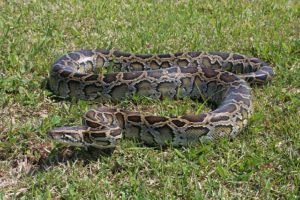
The Burmese python, Python bivittatus, is one of the large constrictor snake species, measuring on average 3.7 m. It is often found on land near bodies of water, but can also climb trees, especially as a juvenile. Their native range is South and Southeast Asia, but they are an invasive species in the Everglades National Park, in South Florida. The introduction of pythons is thought to have occurred when specimens escaped python farms as a result of Hurricane Andrew in 1992, as well as through the release of python pets.
In the Everglades, they hunt and eat birds, mammals, and alligators. Their diet is varied and has been known to include endangered native species. In fact, the spread of pythons in the Everglades has been associated with the decline in several species of mammals, including raccoons, opossums, bobcats and rabbits. Efforts to control the python population include annual capturing competitions, and the use of trained dogs to spot and capture the snakes.
5. Walking Catfish
Walking catfish is the common name of Clarias batrachus, a species of freshwater catfish native to Southeast Asia. It is an air-breathing fish, and gets its name from its ability to “walk” on its pectoral fins while wiggling its tail (see video below). The fish uses this ability to look for food and new bodies of water. It was introduced in Florida in the 1960s, and has since become an invasive species.
The walking catfish has a voracious appetite and a diverse diet, which includes other fish, invertebrates and plants. They sometimes enter aquaculture farms, going from pool to pool preying on the captive fish. They are also known to harbor the bacteria for enteric septicemia, which can infect farmed fish. These catfish are able to thrive even in small, stagnant pools that are often low in oxygen. They become most aggressive in small pools during the dry season, and can easily become dominant. During cold months or periods of drought, they burrow in the mud and become dormant, emerging when the weather turns more favorable.
6. Water Hyacinth
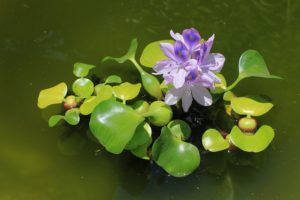
The water hyacinth, Eichhornia crassipes, is an aquatic plant native to the Amazon. It is characterized by floating leaves and pretty flowers that range in color from lavender to pink. The water hyacinth reproduces very rapidly. New plants can be formed by runners from parent plants, or through seeds. Because of their prolific growth, the water hyacinth tends to cover entire bodies of water when not controlled. This is a problem, because it blocks sunlight from reaching other native plants, and removes oxygen from the water, killing the fish. Furthermore, they create a favorable environment for mosquito and snail reproduction, which are known vectors for diseases, including malaria. Water hyacinth populations are known to double their biomass in as little as 12 days. Their uncontrolled growth also clogs waterways and reduces access for boats, fishing, and other human activities.
Their pretty flowers make them popular ornamental plants, which is probably the pathway that has lead to the introduction of this species in foreign ecosystems. The seeds of the water hyacinth can survive for a long time which, along with its rapid growth rate, makes it very difficult to completely exterminate this plant. The water hyacinth is a pernicious species in Lake Victoria, the largest African lake and one of the largest lakes worldwide. Eradication efforts began in the 1990s, but a recent resurgence is causing important economic losses, making fishing and water access difficult.
What can we do to help?
The Nature Conservancy lists some simple actions to help combat and prevent the spread of invasive species:
- Avoid keeping exotic plant species in your garden
- Report sightings of non-native species or, even better, volunteer to help remove invasive species in your area.
- Never release unwanted pets into the wild. Not only is it inhumane for the pet, it can be devastating for the ecosystem. Do extensive research if you plan on keeping exotic pets.
- Avoid transporting hitchhikers. Check your boots and clothes after a hike to avoid transporting invasive weeds, seeds, or parasites. Check your boat thoroughly before moving it to a different body of water.
To learn more, check out the following resources:
Global Invasive Species Database. 2017. 100 of the World’s Worst Invasive Alien Species.
Green, S.J., et al. 2012. Invasive Lionfish Drive Atlantic Coral Reef Fish Declines. PLoS ONE, 7(3): e32595.
Dorcas, M.E., et al. 2012. Severe mammal declines coincide with proliferation of invasive Burmese pythons in Everglades National Park. Proceedings of the National Academy of Sciences, 109(7): 2418-2422.
